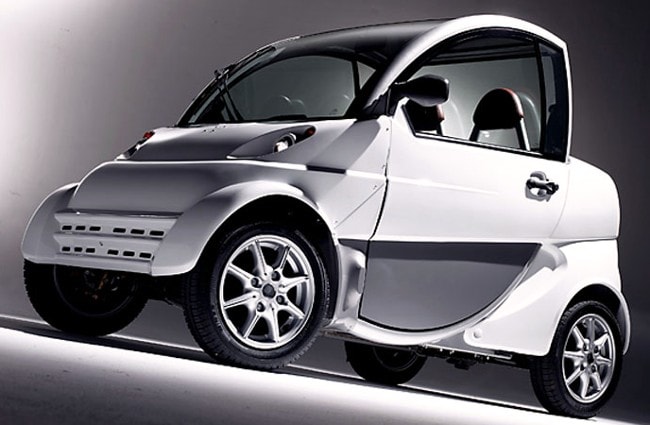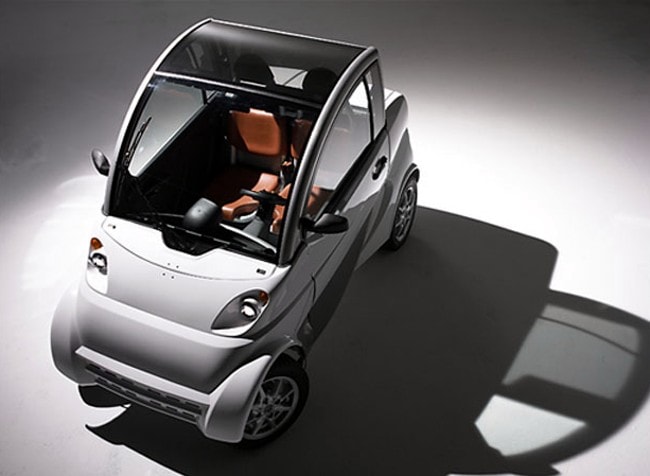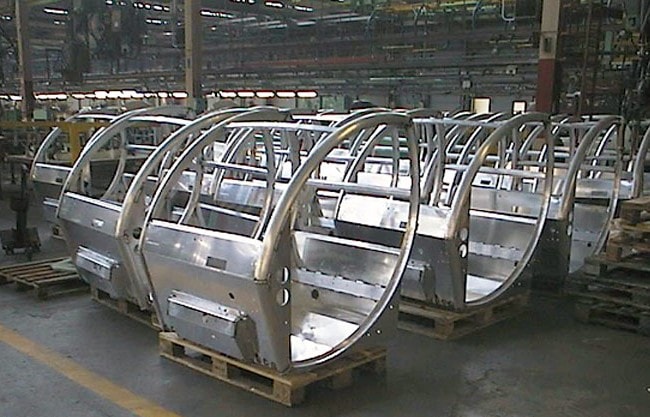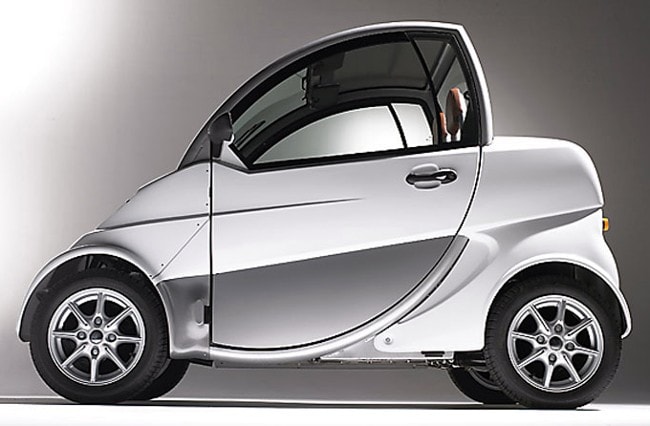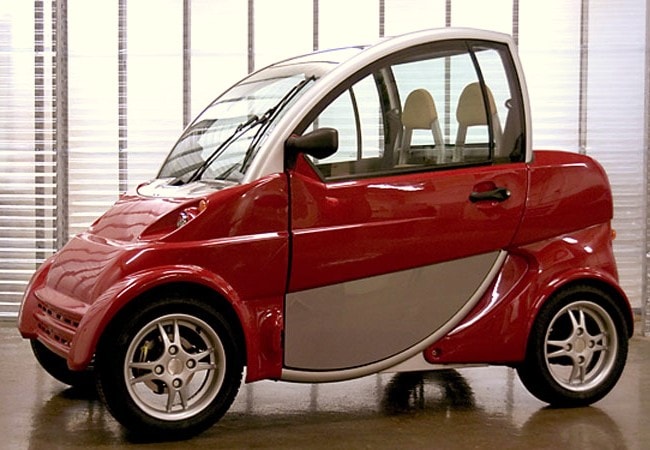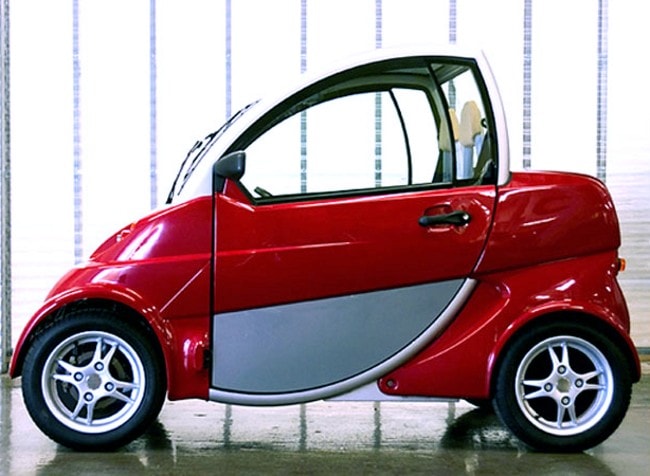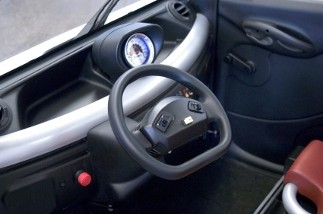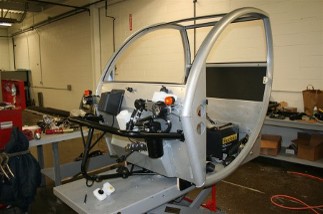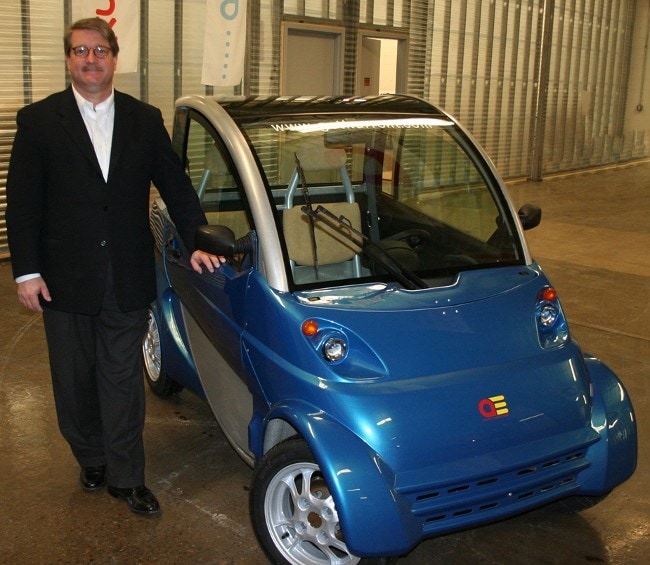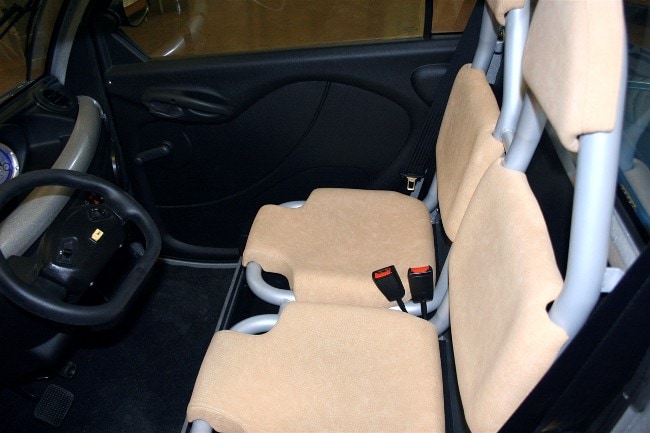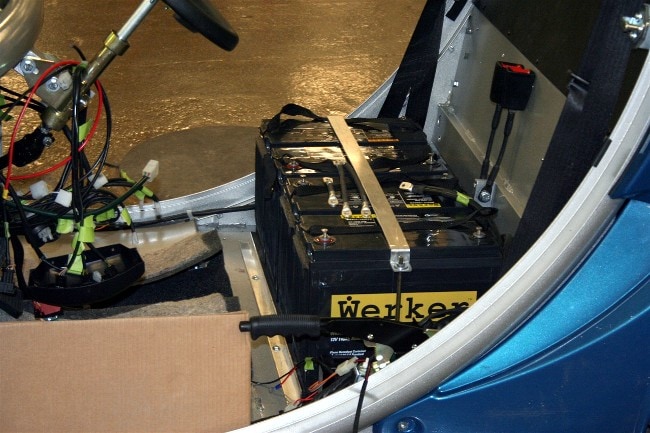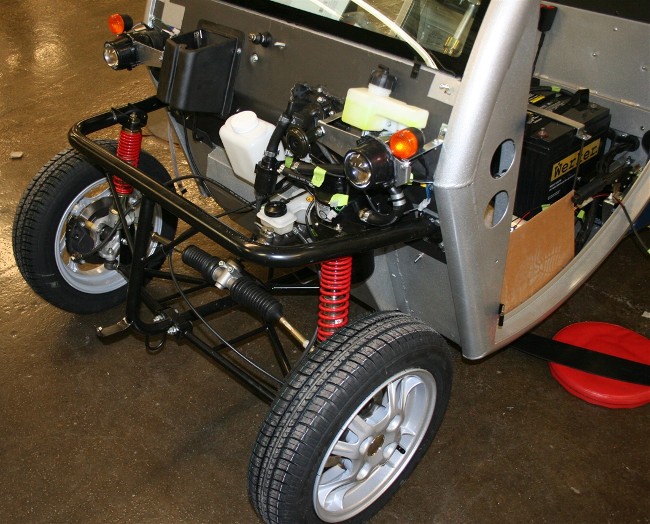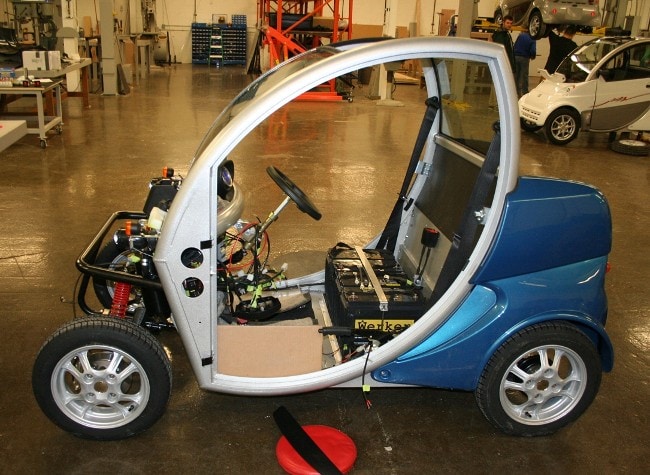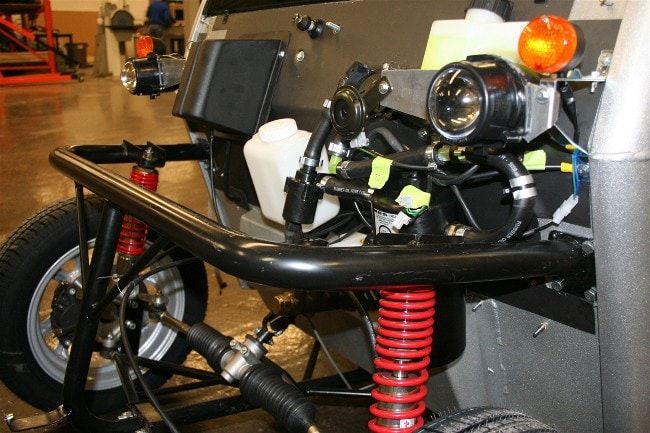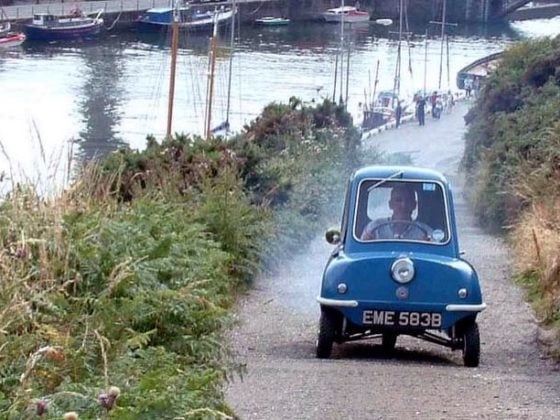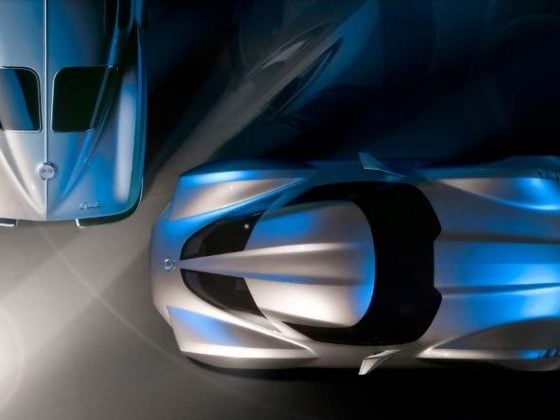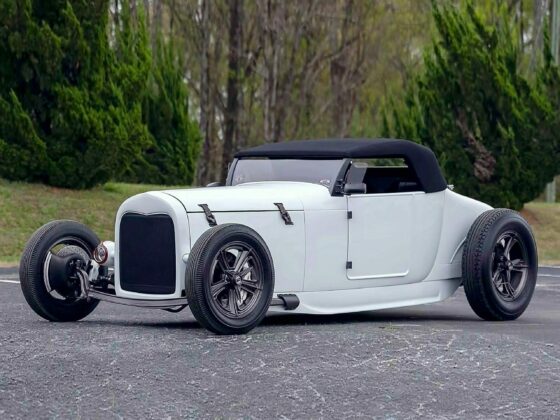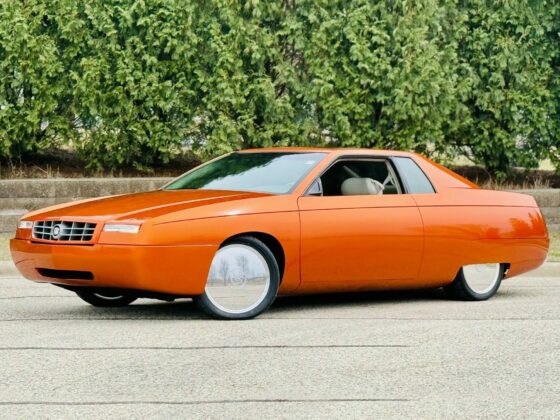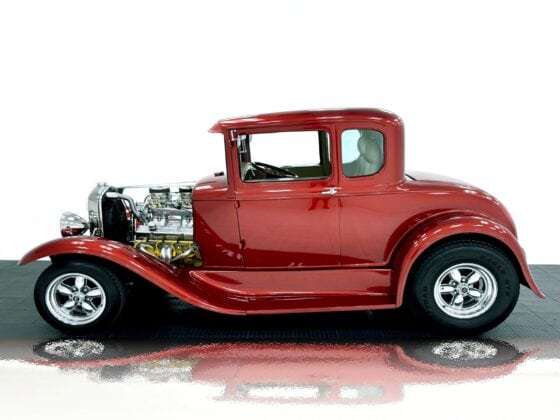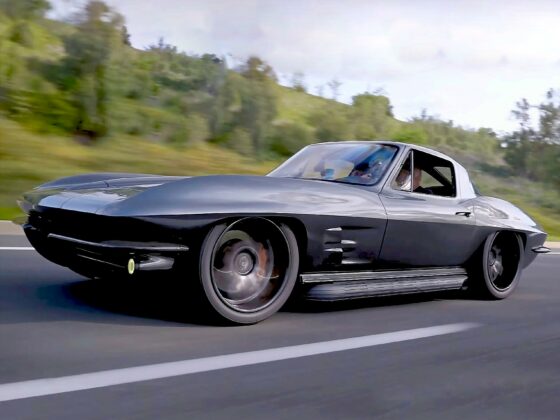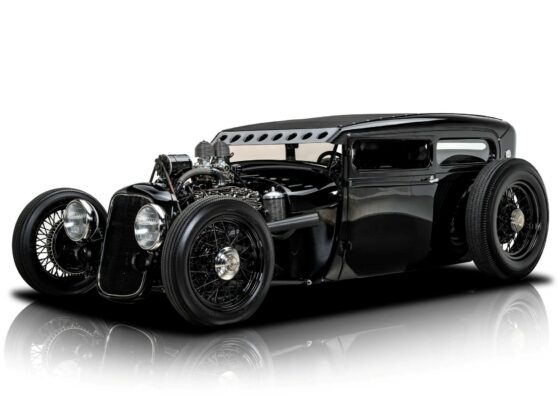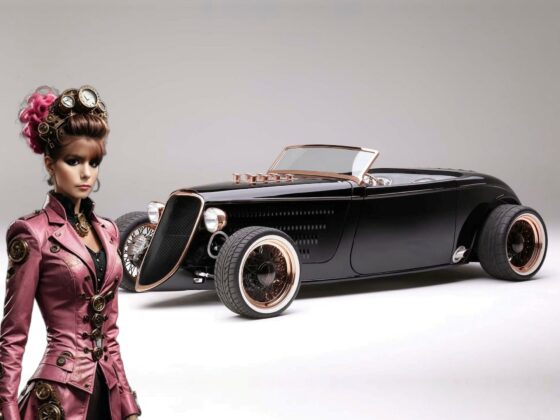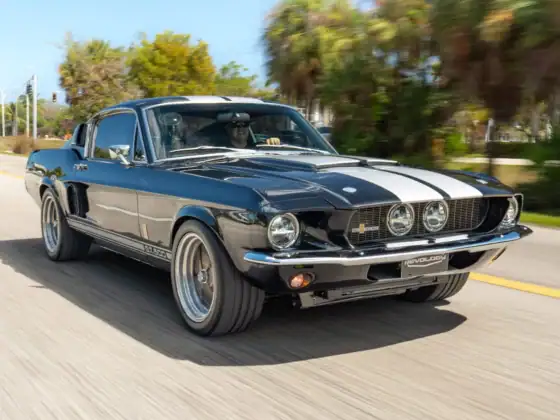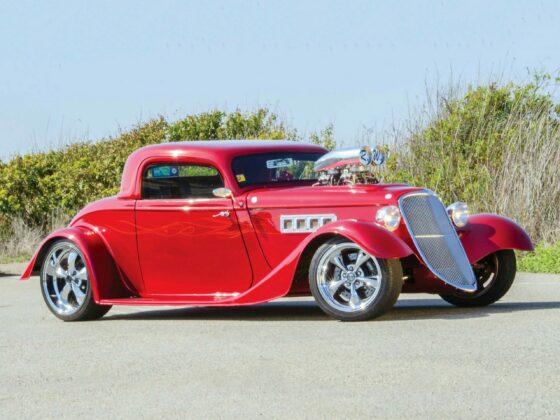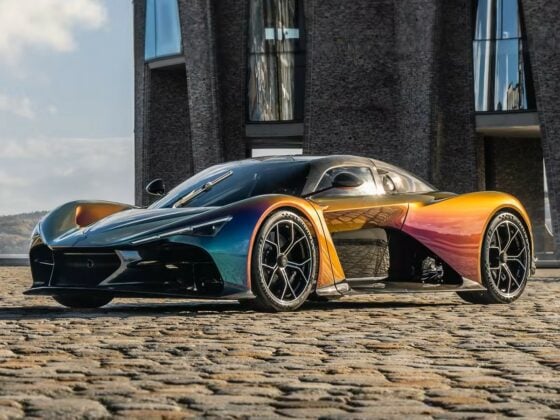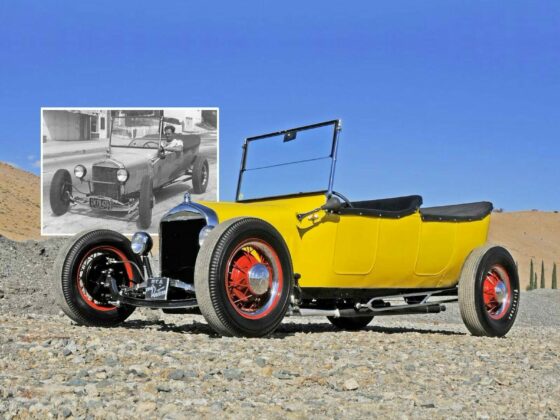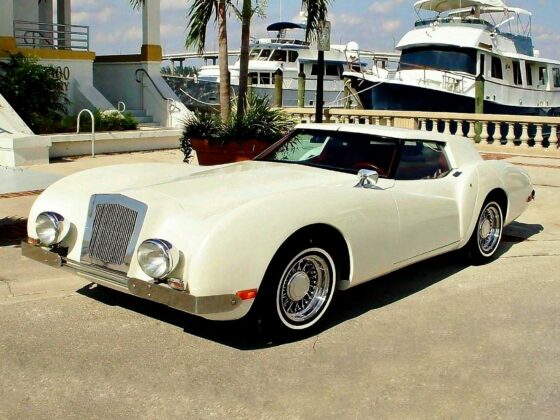2009 AEV Kurrent…
Mix an old non-descript suburban Detroit warehouse with some new Ikea furniture and fixtures, throw in some entrepreneurs with extensive auto industry experience and a plan to attack an environmentally conscious market niche and you have American Electric Vehicles (AEV).
AEV President Scott Thornton invited GatsbyOnline to visit their factory in Ferndale, MI to see their production process and drive their first product, the Kurrent neighborhood electric vehicle.
ABG talked to Scott in late December about his company, the Kurrent, but this was the first opportunity to see this Italian-designed NEV in person.
The Ferndale warehouse serves as headquarters, engineering facility, parts warehouse and assembly plant for AEV.
Most of the staff are auto industry veterans, including Thornton who has 27 years in the business, much of it with Jeep.
Right now, apart from the office areas, the build is divided into two main areas, with one being used for parts storage and the other for assembly and testing.
As production ramps up through this year, the parts storage area will be switched over to a second assembly area.
Due to the relative simplicity of the Kurrent, the assembly area has no moving line, but uses a cellular process instead.
The major components like the body panels and the frame are produced by suppliers off-site and delivered to the AEV facility ready for assembly.
The mechanical components are all off the shelf parts such as the front shock absorbers which are sourced from Ducati motorcycles, all of which helps to keep the overall costs of the Kurrent to a minimum.
The ABS body panels have the color molded in, so no painting is required.
The aluminum “egg-shell” tube frame also comes into the plant painted, and is exposed to view in many areas of the vehicle.
Check out the video for nice overview from Scott of the whole assembly process.
Right now there are about a dozen people working on assembly and each car takes about 16 man-hours to assemble and test, and they are turning out about one complete car a day.
The AEV team are currently refining all the assembly processes to make it easier to build and speed things up.
For example they had been assembling the doors horizontally on a workbench but are now doing upright on a special jig.
They hope to get the production rate up to about 10,000 cars annually by the end of the year.
If sales justify it, they also plan to add a second assembly location on the west coast.
After seeing the assembly process, we went for a test drive in a Kurrent.
The Kurrent is far more than your average golf cart, but it certainly isn’t a car for everyone.
The thirty-five mph top speed means that drivers aren’t going anywhere near a highway.
On the other hand if you live in a gated community or work on some kind of campus, this could be a very economical way to get around.
It could also work in smaller to medium sized cities like Ann Arbor, MI or Madison, WI.
If you live in the city not too far from the downtown area, it makes a very efficient, clean way to go to a class, work, or grocery store.
Speaking of the latter, the Kurrent has a real locking trunk that easily hold three or four bags of groceries.
While not luxurious by any means, the Kurrent is relatively fully equipped. It has locking doors with roll down windows, a radio, heater, windshield wipers, seat belts, hydraulic brakes and a choice of either a glass roof or a folding fabric roof.
The Kurrent is small at a mere 92 inches long, and a weight including the batteries of 1080 lbs.
The is plenty of head and leg room but shoulder room is tight with two passengers, since the car is only 50 inches wide.
The glass roof in the example I drove does helps make the car feel more open.
There is no transmission, just a rocker switch on the dash to select Drive or Reverse.
To drive the car, you turn the key, select D or R and step on the accelerator.
Given the 4.1 kW motor, acceleration is leisurely, particularly with people aboard. Lifting off the go pedal reveals fairly aggressive regenerative braking to maximize the battery range.
Speaking of range, it maxes out at about 40 miles, but is reduced depending on your driving habits, use of the headlights, radio, etc.
The car feels fairly solid, thanks to the stiff aluminum frame.
Anyone who has spent any time driving in Michigan, knows that we have almost certainly the worst roads in the USA.
Given that, even with the short wheelbase, the ride was stiff but not intolerable, and it didn’t feel like the car was going to fall apart. Handling isn’t really much of an issue for a vehicle with such a low top speed, but it certainly didn’t feel tippy going around corners.
The brakes felt fairly strong, although most of this was probably the regen.
This is certainly not a car for everyone, but if you fit the profile, it definitely feels like a very reasonable choice.
It’s cheaper than a GEM and much better equipped.
Styling is always a matter of taste, but the Kurrent has plenty of character for such a small car, and it’s definitely better than your average golf cart. If a neighborhood electric vehicle meets your needs, the Kurrent is definitely worth checking out…
Gatsby: How did you get started with American Electric Vehicles?
Scott Thornton: We have a pretty strong marketing background in launching new brands in the United States and throughout the world. A guy acquired the rights to the vehicle from a relatively under-performing Italian company that had great designs but weak business sense. He asked us for help in launching this brand. We looked at it and thought it was fantastic and next thing we had half the company. It started as most things, out of necessity, I’ve got this great design, can you help me bring it to life? We’re all one big happy family now, we’ve got experts in assembly, manufacturing, marketing, purchasing, design and quality control. We’ve got a really good group of ex-car guys turned new vehicle guys.
Gatsby: So the Kurrent originated from an Italian company?
Scott Thornton: It’s an Italian design that’s been around for about four years. We’ve got about 600 units on the road around the world. We’ve got a lot of good testing on it and the design is just fantastic. We think the styling is best in class. We only have one major competitor and that’s the GEM, so it’s not too hard to beat them in terms of styling.
Gatsby: Design isn’t generally a priority for vehicles of this type.
Scott Thornton: Coming from Torino, Italy, design is a priority for them. This car was created by a company that I’m not even sure is in business anymore, they were called StartLab. The genesis comes from really sharp car people on the fringe and that’s where these kind of ideas originate.
Gatsby: I understand you have a background in marketing, and you hooked up with the Italians to push this project forward?
Scott Thornton: Yes, it quickly became not an Italian team, but an all American team in Ferndale, MI. We’re all from here and we wanted to be able to leverage our connections with expertise in assembly, manufacturing, design and purchasing with the suppliers.
Gatsby: Is your background in the auto industry, or elsewhere?
Scott Thornton: My background is 27 years in the auto industry. I started in the sales and marketing side with American Motors, Renault, and then Chrysler and DaimlerChrysler. I worked at six of the top advertising agencies and I’ve got a strong background in brand development and dealer sales. I worked on creating the Jeep brand in the late seventies and eighties. This is very similar to what happened with Jeep, take a single use, very narrow vehicle and through brand development and cultural receptivity, it morphed into the sport utility category. From there it held the enviable position of owning or creating the category which it competed in. We believe that with the electric car, particularly the NEV (neighborhood electric vehicle) category, the planets are lining up. We’ve seen it before and we’re moving in that same direction with American Electric Vehicle Company and our first product, the Kurrent to set the stage to own the fun and more emotional aspects of the NEV category, and we’re using Jeep as a template.
Gatsby: You have the Kurrent now, what’s the status of getting that vehicle to market?
Scott Thornton: We have about twenty-five sold already and eight more in production. We’ll have about twenty-five produced by mid-January. We source our components from all over the world and we’re driving toward seventy percent US sourced components with half of that from Michigan.
Gatsby: What are the retail plans for the Kurrent? Are the cars that you have in progress now and in the next few months pre-sold? And what are the retail plans going forward?
Scott Thornton: Yes, those are sold. Coming from the large auto industry, our first instinct was to get a major dealer network going, get distributors, etc. As we got into it, we realized we were going sell out our 2007 volume of about 2,100-2,500 units, and 2008-2010 were going sell about 10,000 units and we’re going to top out at 15,000 units which is a small company. So there’s no real need to have these great legacy organizations and structures that we grew up with. So it was a real learning process for us to skinny the operation of the company down to the point where it made sense from a volume and distribution standpoint. Therefore we’ll have a handpicked dealer network in specific markets where NEVs are strong. It’s going to grow organically and be populated by people who understand NEVs, and the consumer and market that’s emerging for smaller more fuel efficient, expressive vehicles. If you bought one of these at typical car dealership, might not be able to drive it home because it’s an NEV and the government restricts it’s top speed to 25 mph on roads with speed limit of up to 35 mph. We have a home delivery program as part of the price. Since it’s essentially an electrical appliance, you call a 1-800 number and we have a mobile service contract around the United States and technicians will come out and fix whatever problems are on the car. From a dealer standpoint, there is no need for carrying parts inventory or service capability. Essentially it’s understanding the market, being in the right place and a sales organization driving sales. It’s relatively low overhead and high margin for dealers.
Gatsby: What’s the price of the Kurrent?
Scott Thornton: The Kurrent as it stands right now comes much better equipped than a GEM. It has wipers, doors, headlights, seatbelts and a trunk all standard and sells for $9,800 and a delivery charge of $800.
Gatsby: Let’s get into the technical details of the Kurrent a little more. What are the safety requirements of an NEV? and the capabilities of the Kurrent?
Scott Thornton: NEVs are subject to Federal Motor Vehicle Safety Standard 500 (FMVSS500). The requirements state that it has to be under 2,800 lbs, have four wheels and has to have seat belts. It doesn’t require crash testing, and it’s limited to 25 mph. There is some state legislation and lobbying to raise that to 35 mph on 35 mph roads. the Kurrent has doors with steel frames inside, an aluminum egg that encloses the driver and passenger with the suspension attached to that. It has full safety glass, seat belts, headlights, turn signals, horn, and backup lights. It’s got all the passive safety equipment that you need. We did do a crash test in Japan which is required for NEVs over there. We did a 25 mph front end crash test which we passed with flying colors.
Gatsby: What type of battery are you using?
Scott Thornton: The batteries four 12V deep cycle, lead gel batteries tied together for 48V. It also has another 12V auxiliary battery that runs the heater, radio, wipers and other accessories.
Gatsby: Can you tell me more about the motor, brakes and suspension?
Scott Thornton: It has MacPherson strut front suspension, with disc brakes in the front and drum brakes in the rear. The rear suspension is trailing arm which gives good performance and great ride. It has rack and pinion steering and the vehicle drives like a sports car, not like a golf cart.
Gatsby: How much does it weigh?
Scott Thornton: It weighs about 1100 lbs and the gross vehicle weight is about 1800 lbs.
Gatsby: What’s the range?
Scott Thornton: The range is about 35-45 miles, depending on how much you use the heater, the headlights and other accessories. You can charge it from complete exhaustion to completely full in about eight hours, but you can plug it in anytime to any 110V outlet. The charging system is all self contained unlike our competitors which require a 220V charging unit.
Gatsby: Where do you go beyond the Kurrent?
Scott Thornton: Next year we’re working on several other versions of our vehicle including a four wheel drive version, a four seat, two door version, and utility version with five foot pickup bed. Battery and motor technology are coming along so quickly that it makes this side of the business unbelievably challenging and fun. We’re also looking at hub motors, which would give us more flexibility.
Gatsby: Would these future vehicles still be in the NEV class, or would they move up into a more conventional class?
Scott Thornton: No, what we want to focus on, like Jeep, we want to own the NEV category. We want to create the excitement and cultural connection within the NEV category that we did with Jeep in the SUV category.
Gatsby: How big do you think that market can really get?
Scott Thornton: I think it’s growing quite a bit. There’s about 80,000 NEVs on the road today and the market travels at about 20-25,000 a year, we think that’s going to grow at about 20-27 percent a year as the requirement for more fuel efficient fleets increases. With gated communities, industrial complexes, college campuses, the market is going to grow to maybe half a million vehicles by 2010. Nobody would have that about the SUV category, but if you make the right products and serve it up in the right way, it can be done. We’ve done it many times. The acceptance of these cars is growing and the consumer desire for expressive designs that can make a cultural connection is growing and therefore companies like ours that can make a very nice living on 10-15,000 units a year is a business model of the future.
Pour inciter particuliers, collectivités ou entreprises à investir dans un véhicule électrique ou hybride, le gouvernement Français accorde des aides à l’achat :
Type de véhicule
Aide
Commentaires
Gestion
Voiture particulière (VP) et Véhicule Utilitaire Léger avec permis de conduire (CTTE)
5 000 € limité à 20 % du coût
Décret n°2007-1873 du 26 décembre 2007 et Décret n°2009-66 du 19 janvier 2009 instituant une aide à l’acquisition des véhicules propres
Superbonus : 1000 € si accompagné de la destruction d’un véhicule
CNASEA
Tricycle à moteur(TM), Quadricycle léger ou lourd à moteur (QM), et Véhicule Automoteur Spécialisé (VASP) destinés au transport de personnes ou de marchandises
2 000 € / véhicule si charge utile < 500 kg
3 000 € / véhicule si charge utile > 500 kg
Applicable jusqu’au 31/12/2009
Véhicules validés par l’ADEME
ADEME
Bus de moins de 30 places
10 000 €
Applicable jusqu’au 31/12/2009
ADEME
Bus de 30 places et plus
15 000 €
Applicable jusqu’au 31/12/2009
ADEME
Benne à Ordure Ménagère
7 000 €
Applicable jusqu’au 31/12/2009
ADEME
Poids Lourds (PTAC > 3,5 tonnes)
20 000 €
Applicable jusqu’au 31/12/2009
ADEME







